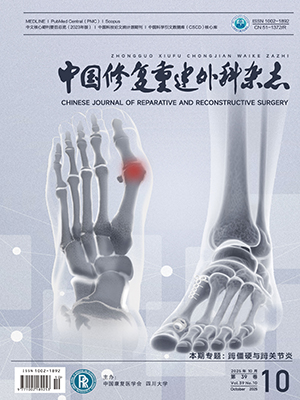Objective To investigate the effectiveness of tibial transverse transport (TTT) in treating Wagner grade 3-4 type 2 diabetic foot ulcers and analyze dynamic changes in immunoglobulin levels. Methods The clinical data of 68 patients with Wagner grade 3-4 type 2 diabetic foot ulcers treated with TTT between May 2022 and September 2023 was retrospectively analyzed. The cohort included 49 males and 19 females, aged 44-91 years (mean, 67.3 years), with 40 Wagner grade 3 and 28 grade 4 ulcers. The duration of type 2 diabetes ranged from 5 to 23 years, with an average of 10 years. The number of wound healing cases, healing time, amputation cases, death cases, and complications were observed and recorded. Serum samples were collected at 6 key time points [1 day before TTT and 3 days, 7 days (the first day of upward transverse transfer), 14 days (the first day of downward transverse transfer), 21 days (the first day after the end of transfer), 36 days (the first day after the removal of the transfer device)], and the serum immunoglobulin levels were detected by flow cytometry including immunoglobulin G (IgG), IgA, IgM, IgE, complement C3 (C3), C4, immunoglobulin light chain κ (KAP), immunoglobulin light chain λ (LAM). Results All the 68 patients were followed up 6 months. Postoperative pin tract infection occurred in 3 cases and incision infection in 2 cases. Amputation occurred in 5 patients (7.4%) at 59-103 days after operation, and 8 patients (11.8%) died at 49-77 days after operation; the wounds of the remaining 55 patients (80.9%) healed in 48-135 days, with an average of 80 days. There was no recurrence of ulcer, peri-osteotomy fracture, or local skin necrosis during follow-up. The serum immunoglobulin levels of 55 patients with wound healing showed that the levels of IgG and IgM decreased significantly on the 3rd and 7th day after operation compared with those before operation (P<0.05), and gradually returned to the levels before operation after 14 days, and reached the peak on the 36th day. IgA levels continued to decrease with time, and there were significant differences at all time points when compared with those before operation (P<0.05). The level of IgE significantly decreased at 21 days after operation compared with that before operation (P<0.05), while it was higher at other time points than that before operation, but the difference was not significant (P>0.05). The level of C3 showed a clear treatment-related increase, which was significantly higher on the 7th, 14th, and 21st days after operation than that before operation (P<0.05), and the peak appeared on the 14th day. The change trend of C4 level was basically synchronous with that of C3, but the amplitude was smaller, and the difference was significant at 7 and 14 days after operation compared with that before operation (P<0.05). There was no significant difference in KAP/LAM between different time points before and after operation (P>0.05). Conclusion TTT can accelerate wound healing, effectively treat diabetic foot ulcer, and reduce amputation rate, and has definite effectiveness. The potential mechanisms of TTT in the treatment of diabetic foot ulcers include the dynamic regulation of IgG, IgA, IgM, and IgE levels to balance the process of inflammation and repair, and the periodic increase of C3 and C4 levels may promote tissue cleaning, angiogenesis, and anti-infection defense.
Citation:
YU Xianjun, ZHANG Dingwei, YU Lin, ZHAO Sichun, HU Rong, LI Xiaoya. Study on effectiveness and changes in immunoglobulin levels of transverse tibial transport in treatment of Wagner grade 3-4 type 2 diabetic foot ulcer. Chinese Journal of Reparative and Reconstructive Surgery, 2025, 39(8): 1030-1036. doi: 10.7507/1002-1892.202503077
Copy
Copyright © the editorial department of Chinese Journal of Reparative and Reconstructive Surgery of West China Medical Publisher. All rights reserved




